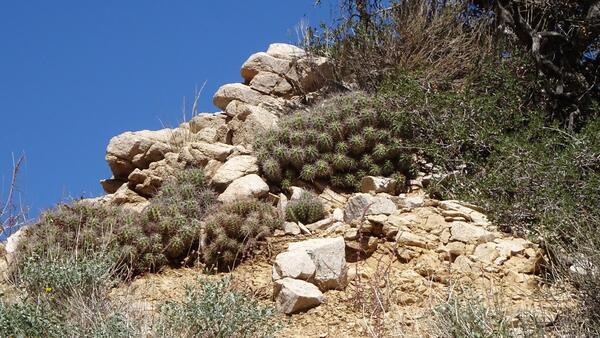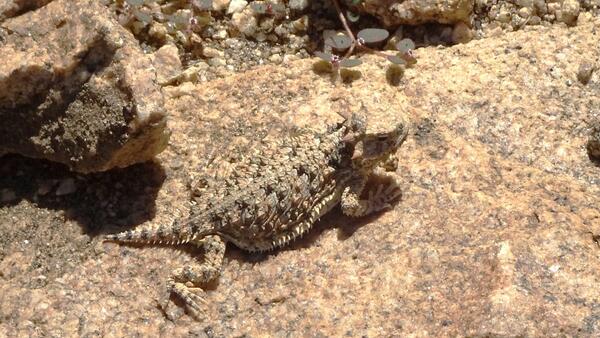Ravens and environmental change
"Cruel birds, ravens, but wise. And creatures should be loved for their wisdom if they cannot be loved for kindness." — Hannah Kent
“Raven?? Yes?? What do you believe in?? I believe in – finding out!” — Ellen Schreiber
Early desert naturalists rarely saw ravens. Their field notebooks recorded ravens maybe once in a week while exploring the thorny, waterless desert expanses. Now they are common, a product of both their cleverness and our waste; they have thrived on the spoils of our refuse.
Still I wasn’t prepared for what we saw as we set out on the Panorama Trail. A cloud of ravens flew in front of us, maybe numbering 100, maybe a mere 50, but a cloud, nonetheless. Harkening back to those archaic names our species has given to groups of animals, it was a “conspiracy of ravens,” or, another name with a definite anti-raven sentiment, an “unkindness of ravens.” We watched these ravens repeatedly rise from the desert floor soaring together and croaking commentaries to each other before settling again on the ground just beyond our sight.
What were they doing? Maybe it was a group of unmated young birds assessing each other for future bonding, a raven “singles bar.” Or perhaps they were just having fun. Both viable hypotheses. Ravens have been tested for intelligence, or better stated, their ability to solve novel problems, and they have shown themselves to be at the top of their avian class. Shown a peanut in a clear, plexiglass box, with an assortment of seemingly unrelated rods and hooks, ravens will devise tools that allow them to extract the nut, a task that would challenge many humans. Smart birds, so play or having fun is not out of the question. I have watched flying ravens carrying apples and dropping them on each other as they acrobatically avoid the on-coming missiles. Clearly play.
Further down the trail we encountered thousands (maybe it was several hundreds) of plump sphinx moth caterpillars hurrying along the path. Using those archaic names for groups of animals, it was an “army” of caterpillars. Then we saw tell-tale raven tracks in the sand. Rather than a raven singles bar or a playground, the ravens were enjoying a sphinx moth breakfast. That is how science works: postulate hypotheses, test them with data, toss out hypotheses that don’t match the evidence, create new hypotheses. Still, it is worth pondering how, in a desert where food can be challenging to find and almost never abundant, how, and why did so many ravens come together to share in a rare desert bounty?
Sharing, even what might seem to be an unlimited food resource, is an act of compassion and reciprocal trust that not enough of us humans have learned. The trust component would come into play if a raven discovered an abundant food source and then somehow conveyed that discovery to other ravens, with the assumption that if in the future a different raven comes across a food cornucopia, that it too would invite others to the banquet. If I share with you in my good fortune, I “trust” that you will return the favor when providence comes to you. I suspect, in this non-breeding season, these ravens share a communal roost each evening and somehow communicate to each other locations of plentiful food resources.
The Panorama Trail is one of more than 40 trails upon which we conduct annual surveys, trying to gauge the rate of environmental change occurring across our desert landscapes. This trail climbs gradually from its start in a Joshua tree-blackbrush woodland into a pinyon pine-California juniper-Joshua tree woodland. The trail loops up one canyon, climbs over a ridge, and then finishes the loop in a second canyon. Assuming one heads clockwise around the loop, the first canyon is slightly lower in elevation and a bit farther north. The second canyon on the return is higher and more southwesterly.
As we entered that first (lower) canyon I was taken aback by the pinyon pine mortality. It looked like well over 50% of the pinyons were dead (it could have been more than 80%). The pines were toppled over as if giants had pushed them down and there were no young pines to replace them. Its easy to assume that the cause was the persistent drought, but it is more complicated than that. These were large, mature trees, easily many centuries old, and they have experienced many droughts. The trees didn’t just die because they were thirsty but being thirsty weakened their defenses against pine beetles.
Pine beetles are native species that have coexisted with the pines for thousands and likely millions of years. The beetle’s larvae eat the tree tissue just beneath the bark, tissue that otherwise transmits water and nutrients up and down the trunk. Too many beetle larvae mean no water and nutrient transmission. When beetles attack, the trees counter attacks with pine sap. However, if water stressed, the tree has less to fight back with. The additional factor is temperature. The temperature factor comes into play because cold winter temperatures kill the beetles; when winters are warmer as they are now, not only do more beetles survive the winter, but they are also able to breed all winter long creating an ever-expanding population that overwhelms the pines’ defenses.
As the trail climbed over the ridge into the next higher canyon there was a distinct difference. The same plant species, but much less mortality and even some recruitment (successful reproduction). We saw a handful of pines that were just 3-5 feet tall; not seedlings but also not grizzled centuries-old trees. Also, in evidence were lots of young Joshua trees. What was the difference? A hypothesis that fits with our observations includes the higher elevation (colder winters and so perhaps higher winter beetle mortality) and being incrementally closer to the south where the winter rains first hit the upper elevations of the National Park. Likely colder and likely wetter, perhaps just enough (for now) to sustain a pinyon pine-California juniper-Joshua tree woodland.
There were other warning signs. No pinyon jays and no mountain quail, both species we had seen on previous surveys, and as their name suggests the jays are closely tied to healthy pinyon pines for food. Also fewer of certain lizard species, western fence and desert spiny lizards. One highlight was the sighting of a hatchling Blainville’s horned lizard, a species restricted to the highest elevations of the park. Although never common, in past years we had found them all along this trail; this sighting was at the very highest portion of the trail as it crossed the ridge from one canyon to the next.
Nullius in verba
Go outside, tip your hat to a chuckwalla (and a cactus), think like a mountain, and be safe

